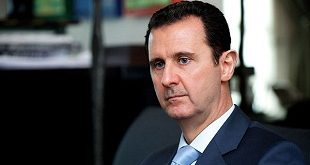
By Moses Byaruhanga
If voter turnout was 60% and 68% of this voted Museveni, why should one think the 40% who did not vote were against him?
A lot has been written about last month’s presidential elections that were won by President Museveni with a 68%. Some of the critics without analysing the reasons why Museveni won are downplaying the win that it was because of money and that the people who turned out to vote were “few”. Let me start with the voter turnout. With the 60% turnout, I am amazed that some critics are saying that was low, hence giving reasons why some people never voted. They argue that the people knew their votes would not change anything. Ugandans are fond of comparing themselves with the outside world, which is good. I have looked at the voting pattern in America to compare with our own. In the US presidential elections since 1960 voter turnout has only been above 60% in 1960 when it was 63.1%, in 1964 when it was 61.9% and in 1968 when it was 60.9%.
For the rest of the period including the last election in 2008 that brought President Obama to office, turnout has been below 60%. In the Obama election that was seen with a wide participation, voter turnout was 56.8%. In the case of congressional elections, in the same period referred to above, voter turnout was above 40% three times in 1962 (47.3%), 1966 (48.4%) and in 1970 (46.6%). For the rest of the period voter turnout has been below 40%. So what is the hullabaloo about the voter turnout in Uganda of 60%? In America that would be too high but for Uganda because someone wants to downplay Museveni’s win they think it’s low. Then they start speculating the reasons why some people never voted and that if they had voted, they would have cast their ballots in favour of the opposition. Wait a minute. Is it not that research is about sampling? If 60% of the registered voters turn up and 68% of them vote Museveni, what makes some people think that the 40 percent of the people who never voted were anti-Museveni? It should follow that even with those who never voted, 68% of them would still have voted Museveni. Of course in the future we need to sort out the national register so that there are no ghost voters or more than single registration of an individual voter whose existence on the register lowers the turnout when the voters are vigilant to stop ghost voting. With issuance of the National Identity cards in the offing, I believe this problem will be sorted out once and for all.
On the money, a lot has been written about with some people like Charles Obbo speculating in his recent article in The Independent (March 04-10, 2011) that Museveni could have used as much as US400m. Indeed this is speculation. The expenditure lines for the NRM were well known. Contribution to parliamentary candidates’ direct constituencies, Shs20m, Women MPs and district chairpersons Shs25m, the lower local governments, the sub-county chairpersons, district and sub-county councillors got far less.
The other lines of expenditure were organising presidential rallies, publicity like posters, radio and TV Ads, T-shirts etc. The other expenditure was the funds sent to the NRM village structures to carry out mobilisation. Each village received Shs 100,000 and this is publically known as it was reported in some of the media. There is no way the above lines of expenditures could run into millions of dollars like Obbo would like us to believe or The Observer which recently suggested that NRM could have spent above Shs500 billion in the last election. Those who are saying that, are trying to find reason to show that Museveni’s win was not legitimate and to imply that NRM used funds from the national treasury to finance its election. I am afraid they are on the wrong side of history.
What those critics forget is that as a result of economic stability, businesses have flourished and many Ugandans are more than willing to contribute to the NRM cause. And this is what exactly happened.
If you want to know why NRM won, the answer is simple. President Museveni had the right message while his opponents had a wrong one. Take education as an example. Museveni appreciated both UPE and USE. He acknowledged that there were problems in UPE where parents were being asked to pay lunch fees. He said that was wrong and it will be stopped. He promised rehabilitation of government secondary schools, free higher education and introduction of university loans for those students who cannot afford private sponsorship. He also promised to construct teachers’ houses laboratories and libraries plus progressively increasing teachers’ salaries. What did Kizza Besigye promise? Free lunch for UPE pupils and increasing primary school teachers’ salaries from the current Shs260,000 to 400,000. To Besigye the burden in education was lunch and teachers’ salaries. To Museveni the burden was extortion of illegal fees from parents in the name of paying for lunch, fees in A-Level and technical education and fees at public universities hence introduction of university loan. For the above messages, who would you vote for? On the whole Museveni talked about achievements, acknowledged problems in service delivery and promised to fix those problems and promised new programmes. Besigye on the other hand went native as usual. For instance, he regretted having treated Museveni in the bush, praised Amin, told lies that NRM was responsible for loss of cattle [in Teso] to the Karimojong rustlers and war in the north. The people in the north didn’t want to know who was responsible for the war but a promise of a future now that they are out of the camps. Besigye lived in the past. How can a doctor regret having treated a patient? In other words it’s wishing the patient had died. Did that show Besigye as man with a heart? Would you trust such a person?
Moses Byaruhanga is Senior Presidential Advisor on Political Affairs
mkbyaruhanga@yahoo.com
 The Independent Uganda: You get the Truth we Pay the Price
The Independent Uganda: You get the Truth we Pay the Price


